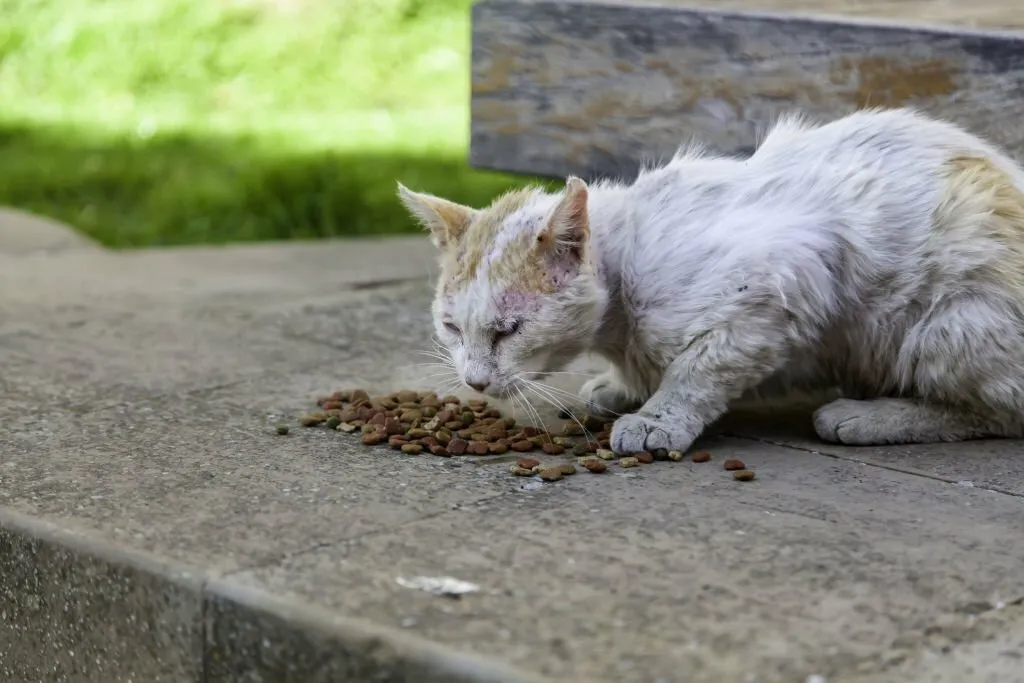Do you want to know the signs of cat abuse and how to handle such cases? Here, you will get to know the eight ways you can identify cat abuse.

Pets, especially cats, are beloved members of countless households worldwide.
As a responsible pet owner or a concerned individual, understanding the signs of potential cat abuse is crucial in safeguarding these gentle animals.
Furthermore, recognizing signs of cat abuse early can prevent further harm and ensure the well-being of these furry companions.
As you keep reading, you will get to know the eight essential ways to spot the signs of potential cat abuse.
How to Spot the Signs of Cat Abuse

Here are the eight ways to spot the signs of Cat Abuse
1. Seeing Unexplainable Injuries and Bruise
Observing physical cues is crucial when determining potential cat abuse. Look for unexplained injuries, such as bruises, cuts, or limping.
Matted fur, poor coat condition, extreme thinness, or untreated illnesses are also concerning.
Pay attention to signs of overgrown claws or lack of grooming, as they could indicate neglect or mistreatment.
2. Sudden Timidness and Excessive Fear
Cats experiencing abuse may display notable behavioral changes.
Watch for increased aggression, excessive fear, or sudden timidness around specific individuals.
Also, behavioral shifts like excessive hiding, reluctance to eat, or unexplained changes in litter box habits could signify distress or mistreatment.
3. Having Emotional Distress
Emotional well-being is as crucial for cats as it is for humans.
Signs of emotional distress in cats include excessive meowing, constant pacing, or appearing excessively needy.
Also, fearful reactions or flinching at sudden movements or noises might suggest past traumatic experiences and it is a sign that the cat was once abused.
4. Avoidance of Humans
Cats experiencing abuse may exhibit avoidance behaviors towards humans.
This can manifest as fear of being touched or reluctance to interact, even with their owners.
Also, constantly seeking seclusion or displaying aggression towards people might be indicative of a history of abuse.
5. Lack of Trust and Socialization
Lack of trust and socialization could be a strong indicator of cat abuse.
Cats that have undergone mistreatment might show reluctance to engage with others, including other animals or humans.
Watch for extreme shyness or avoidance in social situations.
6. Poor Living Conditions
The environment where a cat resides can provide important clues.
Poor living conditions, such as a lack of food, water, or adequate shelter, could indicate neglect.
Overcrowding, unsanitary conditions, or the presence of hazardous materials are red flags for potential abuse.
7. Lack of Proper Veterinary Care and Records
A lack of proper veterinary care and records is a significant concern. Regular vet visits and updated vaccinations are essential for a cat’s well-being.
Missing or incomplete medical records could suggest negligence or abuse.
8. Having and Trusting Your Feelings About Potential Cat Abuse
Ultimately, trust your instincts when you suspect potential cat abuse.
If something feels amiss or if the situation seems suspicious, do not hesitate to seek guidance or report it to the appropriate authorities. Your vigilance could be crucial in ensuring a cat’s safety.
In conclusion, understanding and recognizing the signs of potential cat abuse is vital in protecting these vulnerable creatures.
Whether you’re a pet owner or a concerned individual, being aware of these indicators can make a significant difference in preventing cat abuse.
Related Searches:
